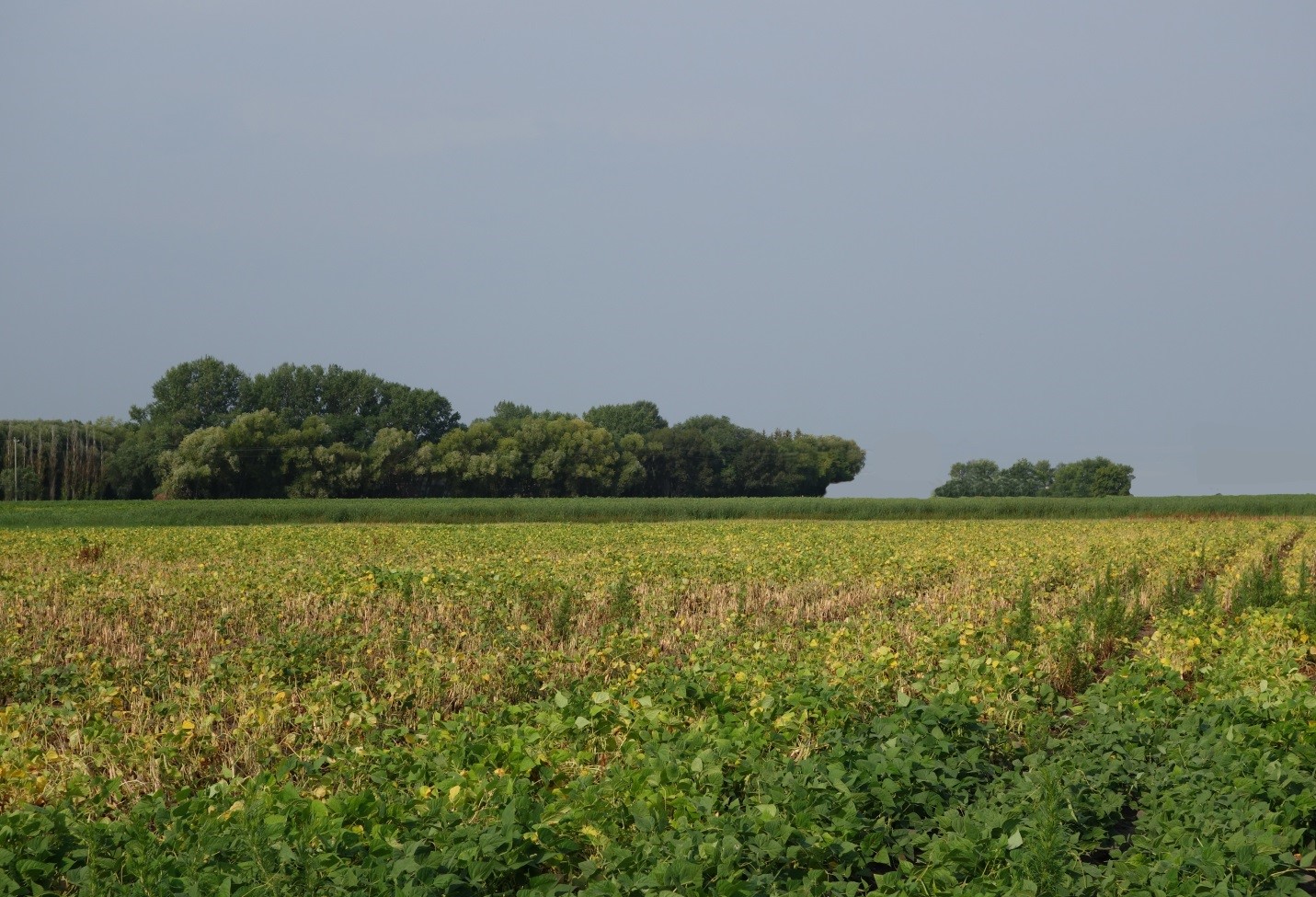Debra McLaren1, Holly Derksen2, Robert Conner3, Yong Min Kim1, Waldo Penner3
1 Brandon Research and Development Centre, Agriculture and Agri-food Canada
2 Manitoba Agriculture
3 Morden Research and Development Centre, Agriculture and Agri-food Canada
Soybeans are a relatively new crop to western Canada, and many of the root diseases that are prevalent in the well-established soybean growing areas of the country are just starting to appear here in Manitoba. Throughout Canada, new root diseases of soybeans continue to emerge and spread. Additionally, pathogens that cause well-established diseases continue to evolve in response to the development of control measures implemented by growers. For these reasons, it is vital that the prevalence and severity of the different root diseases be monitored throughout the soybean production areas of Manitoba in a systematic way.
Soybean production continues to increase in Manitoba with 2.3 million acres (930,800 ha) seeded in 2017 – this represents the tenth consecutive annual increase in soybean production in the province. Root rot is a serious constraint in other areas of Canada where soybean production has been well established and this disease complex is becoming more of an issue in Manitoba as soybean production continues to expand.
In 2017, soybean crops were surveyed for root diseases at 106 different field locations in Manitoba. Areas of the survey were expanded to include not only randomly chosen fields from regions in south-central and southwest Manitoba, where soybean is commonly grown, but fields from non-traditional soybean areas into which the crop is expanding. The survey of root diseases was conducted during mid- to late July when most plants were at the early pod stage. At least ten plants were sampled by uprooting them at each of three random sites in each field surveyed. Root diseases were rated on a scale of 0 (no disease) to 9 (death of plant) for all 106 fields. In 40 soybean fields, 15 symptomatic roots were collected for fungal isolation and identification and fifteen additional roots were frozen for future PCR analysis of root rot pathogens. The same 40 fields were re-assessed for Phytophthora rot in mid-August when most plants were at the pod yellowing (R7) stage. An additional 49 fields were also included in the Phytophthora survey with samples collected by staff at Mb Ag, MPSG, BU and the U of M. Approximately 360 stems were placed on different selective media to identify the Phytophthora spp. infecting them based on morphological characteristics. Tissue samples from symptomatic plants also were frozen for molecular detection of pathogens at a later date.
Root rot was observed in all 106 soybean crops surveyed in July 2017 with root rot severity ratings that ranged from 1.2 to 8.0 with a mean of 4.2. Sixty-three crops (59%) had average root rot severity ratings above 4 (i.e., symptoms were present on 50% of the root system and plants were stunted) and this would have had a detrimental effect on yield. The microorganisms most frequently isolated from roots of infected plants (Figure 1) from 40 crops belonged to Fusarium spp. Rhizoctonia root rot (Rhizoctonia solani) was not confirmed in any of these 40 crops surveyed in 2017. The low or lack of recovery of R. solani in recent years suggest that in Manitoba this fungus may not be as important a root rot pathogen of soybean as are Fusarium spp., in contrast with other regions in western Canada. Pythium root rot was not detected in any of the 40 soybean crops surveyed in 2017 either.
Phytophthora rot was identified in 28% (11/40) of fields surveyed in mid-August for this disease (Figure 2). Each symptomatic plant that was positive for P. sojae had a discoloured taproot with lesions that progressed up the stem (Figure 3). Plant samples were also obtained from the additional 49 fields, and P. sojae was identified in 41% (20/49) of these fields. A total of 35% (31/89) of Manitoba soybean fields were positive for the presence of Phytophthora rot. Molecular detection methods confirmed the presence of P. sojae from these surveyed crops. A program to pathotype isolates of P. sojae for their virulence has been established at AAFC-Brandon and AAFC-Morden. This work on race identification is ongoing.
New information about the distribution and abundance of these root pathogens will result in future benefits to growers in the deployment of available resistant soybean varieties and using appropriate crop rotations, This also will allow breeders to target resistance towards the known genetic races of the pathogen. With the changes in pathogen genetics and distribution of these pathogens, it is increasingly more important to continually monitor root diseases for their severity and geographic range to implement suitable and sustainable control measures.

